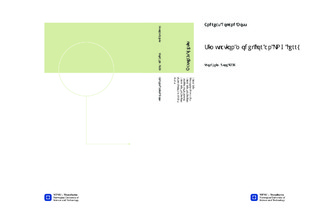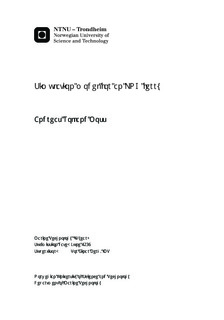| dc.contributor.advisor | Berg, Tor Einar | nb_NO |
| dc.contributor.author | Moss, Andreas Rolland | nb_NO |
| dc.date.accessioned | 2014-12-19T12:11:51Z | |
| dc.date.available | 2014-12-19T12:11:51Z | |
| dc.date.created | 2014-08-26 | nb_NO |
| dc.date.issued | 2014 | nb_NO |
| dc.identifier | 740992 | nb_NO |
| dc.identifier | ntnudaim:11185 | nb_NO |
| dc.identifier.uri | http://hdl.handle.net/11250/238908 | |
| dc.description.abstract | Developing regulations for improving safety at sea has been a concern since in-ternational trading became a reality. The International Maritime Organization(IMO) has become the international adopted treaty, which regulates the manoeu-vring performance of ships to maintain the safety, security and to prevent marinepollution at sea. Manoeuvring tests for evaluating the performance of vessels havebeen established to ensure this.Early estimations of the manoeuvring performance is an essential part and sim-ulation models are therefore a critical tool, as alterations to the vessel can be oflarge costs after the vessel is built. Alterations and modifications can be made inan early design stage with a good simulation model, avoiding such great costs.A set of full-scale trial data has been provided and processed for comparison withthe simulated manoeuvres. The results show that the IMO standard manoeuvresare within the required abilities set for each specific full-scale manoeuvre.The simulation of the manoeuvres were carried out using the simulation modelVeSim. VeSim uses two pre-processors to calculate the motions and hydrodynamiccharacteristics of the vessel. All the IMO standard manoeuvres were well withinthe requirements. The comparison between the full-scale trials and simulated ma-noeuvres give a clear indication of over- and underestimation of the simulatedmanoeuvres in the range of 20 − 50% as an average value. This is mainly causedby questionable results of the hydrodynamic characteristics.VeSim is believed to be a satisfying simulation model regarding the results pre-sented in this thesis. But with regard to the aberrations in the hydrodynamiccalculations, the model should be studied in more detail before making a conclu-sive decision on whether or not to use VeSim as a validated simulation model. | nb_NO |
| dc.language | eng | nb_NO |
| dc.publisher | Institutt for marin teknikk | nb_NO |
| dc.title | Simulation model for an LNG ferry | nb_NO |
| dc.type | Master thesis | nb_NO |
| dc.source.pagenumber | 143 | nb_NO |
| dc.contributor.department | Norges teknisk-naturvitenskapelige universitet, Fakultet for ingeniørvitenskap og teknologi, Institutt for marin teknikk | nb_NO |

